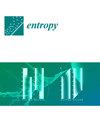有序随机过程。
IF 2.1
3区 物理与天体物理
Q2 PHYSICS, MULTIDISCIPLINARY
引用次数: 0
摘要
序数模式在许多领域已被证明是一种有价值的工具。在这里,我们解决了对理论模型的需求。一个典型的例子表明,可以在没有任何数值的情况下确定有序模式的频率模型。为了建立一个真正的有序时间序列的统计方法,我们明确了平稳顺序的重要概念和需要解决的基本问题。本文章由计算机程序翻译,如有差异,请以英文原文为准。
Ordinal Random Processes.
Ordinal patterns have proven to be a valuable tool in many fields. Here, we address the need for theoretical models. A paradigmatic example shows that a model for frequencies of ordinal patterns can be determined without any numerical values. We specify the important concept of stationary order and the fundamental problems to be solved in order to establish a genuine statistical methodology for ordinal time series.
求助全文
通过发布文献求助,成功后即可免费获取论文全文。
去求助
来源期刊

Entropy
PHYSICS, MULTIDISCIPLINARY-
CiteScore
4.90
自引率
11.10%
发文量
1580
审稿时长
21.05 days
期刊介绍:
Entropy (ISSN 1099-4300), an international and interdisciplinary journal of entropy and information studies, publishes reviews, regular research papers and short notes. Our aim is to encourage scientists to publish as much as possible their theoretical and experimental details. There is no restriction on the length of the papers. If there are computation and the experiment, the details must be provided so that the results can be reproduced.
 求助内容:
求助内容: 应助结果提醒方式:
应助结果提醒方式:


